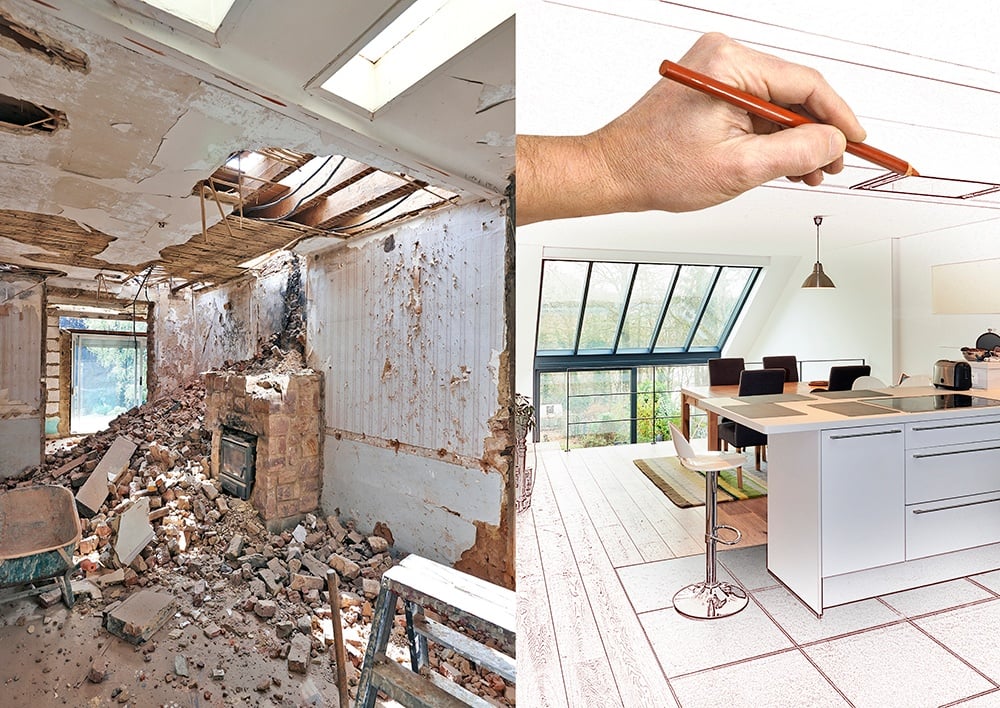
As you mull this plan over, you’re driving around and notice a run-down little house with a For Sale sign in front. It’s in a reasonably nice area, and the property is being offered at an attractive price. You’re sure you can throw several thousand dollars into it to make it presentable before renting it out … and think of the money you’re saving by buying a fixer-upper instead of a home that’s new or already updated! Not so fast! There are many common real estate investing mistakes, and assuming that buying a DIY fixer-upper is better than turnkey investing may be one of the worst. Let’s look at why this strategy can be full of pitfalls.
On the cable home improvement shows, things typically work out so well, don’t they? A savvy investor goes into a dirty, beat-up old house, estimates what will be needed to fix it up, and after the team totally transforms it, they’re able to sell it and make a profit. Unfortunately, many problems with older or badly-maintained homes don’t become obvious until the project gets started. Damage to the foundation, undiscovered water damage, bad plumbing, and undiagnosed electrical problems can set you back thousands before you even get started repairing the items that were obvious from the start. With turnkey investing, you purchase a property that’s in rentable condition, so you don’t have to worry about unexpected and costly issues that may keep tenants out.
Another aspect that people fail to factor in to the DIY vs. turnkey investing debate is that for every month a property sits empty while you repair it, that’s money you’re losing. You’ll still be on the hook for the mortgage payment and all the other expenses of owning the property, but you won’t be getting a rent check to offset those expenses. With a turnkey property, you’re ready to rent on day one — meaning no time lost while your contractor waits on back-ordered plumbing fixtures or rips out all of the insulation in the master bedroom because one of the workers discovered a rodent infestation that’s been going on for years.
Whether you’re purchasing a single home or a multi-family property, when you choose turnkey investing, you can sometimes find occupied properties that come with a tenant already in place. This is excellent for multiple reasons. First, you don’t lose any time and start generating rental income from day one. In the case of a multi-family property like an apartment building, having units already rented helps attract additional renters to fill leftover vacancies. A building that’s sitting empty — even if it’s due to remodeling and updates — is extremely unattractive to renters, making it an uphill battle for you to get the ball rolling when the project is finally complete.
Even if you opt for turnkey investing and purchase a property that’s rental-ready, you always have the choice to give it a little DIY love and make updates later. Part of being a good landlord is making improvements to raise the value of your property — from updating older appliances and installing attractive new flooring to ensuring that the landscaping and outdoor spaces are well-kept and inviting for your tenants to explore and enjoy. If you’re serious about kicking off the ball and generating passive income from your rental properties from day one, avoid the urge to seek what seems like a deal on a “charming fixer-upper” or a property that “needs a little attention.” Instead, choose turnkey investing for the easiest route to generate wealth with as little stress as possible.